Part of Patagonia’s ski line for a few years, the company’s Stormstride pants are marketed as a lighter-weight hardshell option for backcountry touring. These are lane-crossing pants, too; I know a devoted splitboarder who flip-flops hemispheres, chasing nine months of winter, who tours daily in the Stromstride.
The straight facts are this. These hardshell 3L pants meet Patagonia’s H2No Performance Standard, which meets some tried and true waterproof, breathability, and durability standards. This piece is PFC-free, manufactured in a Fair Trade facility, and, more superficially, boasts some fun colorways. The pant’s hand is not crinkly, which is what we often associate with Gore-Tex Pro pants or jackets; they feel a bit more supple, trending toward a more softshell feel.
Let’s start with the basics:
- 3L hardshell pants, as noted. Sealed and taped seams.
- Weight: Confirmed 532g
- 4.8-oz 40-denier Pertex® Shield 100% recycled nylon plain weave face fabric with two-way stretch and a soft polyester knit backer.
- Patagonia calls it a slim fit, which it sort of is—more on this later.
- Adequately sized side vents with functional (not too bulky or overbuilt) gaiter system with zipper/buttons to fit different sized boots (freeride to speed touring/skimo), and a highly adjustable two-sided velcro waistband with the option for a belt or suspenders (not included) if desired.
- Two modestly sized thigh pockets with a sewn-in loop (and stretchy sub-pocket) to secure a transceiver in the right thigh pocket.
- Gaiters are excellent; they are neither overbuilt nor too bulky. The scuff guards share these attributes: they do the job without overburdening the pant’s cuff/hemline. A Recco reflector is sewn into the bottom left pant leg.
- All zippers (beyond the make-it-easier-to-relieve-yourself zipper for men) are weatherproof.
- It comes in a women’s fit.
- Price: $449
Die-hard readers and new The High Route visitors, this pant has been used in the backcountry for roughly five months, from February through early June. The Stormstride pants were not used on any chairlifts. You could use the Stormstride pants as a crossover piece between touring and gravity-defying chairlift skiing. But back to what we know, the backcountry.
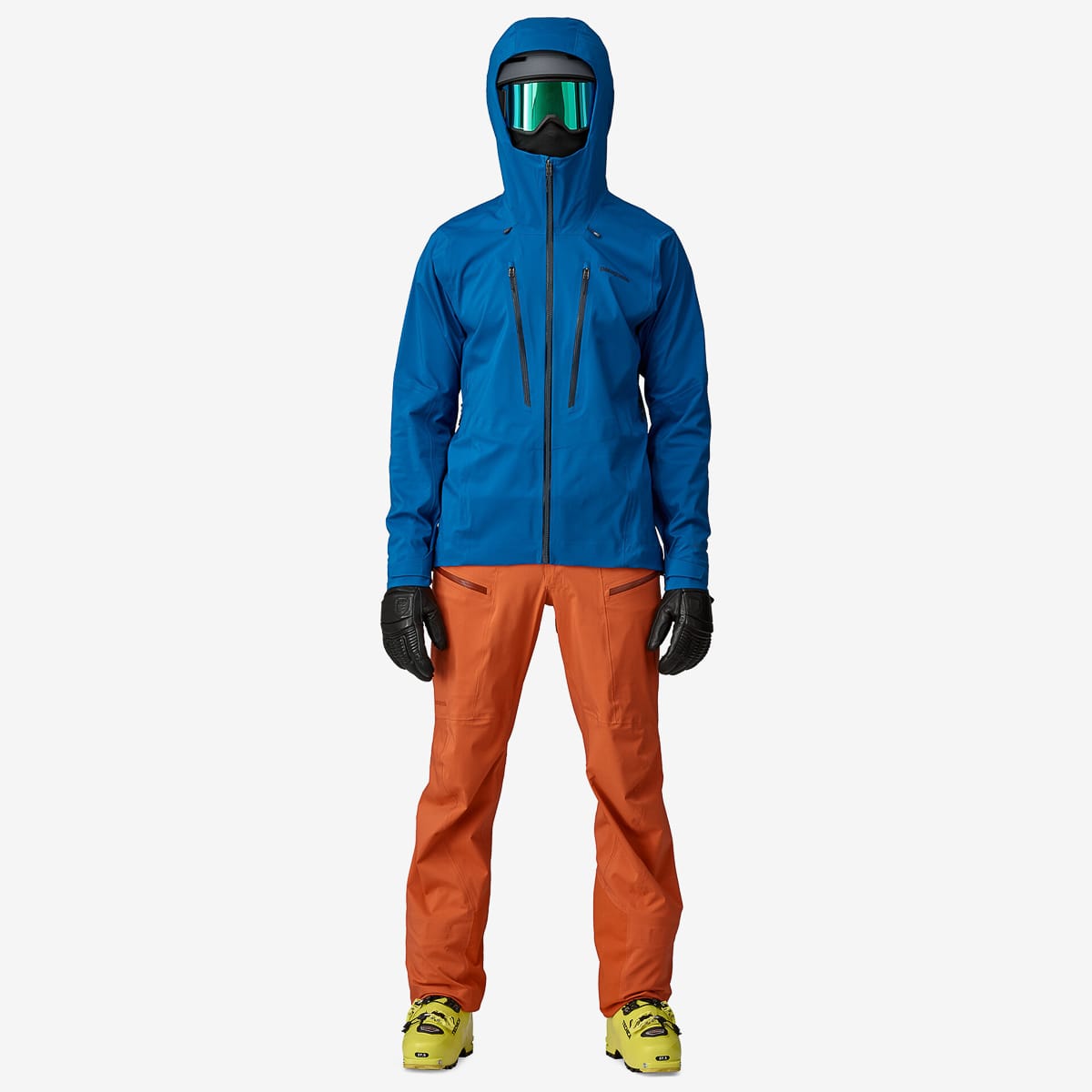
Fit
We’re active folks who quest uphill, kick turn, transition, descend, and are always on the move and grinding. So a balance between freedom of movement and svelte is often desired. Although Patagonia calls them a slim fit, these pants are not bun-thigh-lower leg-hugging tight. Compared to older iterations of Stormstride pants, the waist sizes are a smidge larger and offer what seems to be a greater sizing range due to the dual side hook and loop adjustments. (I wasn’t and still am not a fan of Patagonia’s sewn-in adjustable cinch webbing belt found on older Stormstride and some climbing pant offerings. I’ve seen them fail a few times.) Adding a belt or using suspenders with the Stormstride are also options. Although without a belt or suspenders, the pants sit nicely at the waist and, at least on this ski tourist, don’t sag. (The pants have sewn-in belt loops if that is your jam.)
The thigh fit could be a bit restrictive for those with burly quads. Otherwise, the fit is just generous enough to provide excellent mobility and functionality in the mountains. If they fit as intended, the Stormstride does not restrict mobility when making high-stepping moves ascending snow, or moderate mixed terrain.
The inseam length perfectly aligns with what I consider a size medium: 30-33 inch inseam. For comparison, I got my hands on a pair of ’24-’25 medium Upstride ski pant. The waist was roomier than the Stormstride (again, also a medium), while the inseam was inches too long. They went to the 6’4″ child—the inseam fit him perfectly. Go figure, sizing these days.


Real World Use
In this section, I’ll describe functions like venting, warmth, weatherproofing, and durability when using the Stormstride pants as a daily driver. For background, I often run softshell ski pants unless it’s actively dumping or a reliable forecast predicts the dumping will ensue mid-tour. I bounce between an old pair of Arc’teryx Procline pants as the softshell and TNF Futurelight full-side zip pants as the hardshell.
When I received the Stormstride, I felt their lack of heft and relative minimalism for a hardshell pant and pivoted; from February to June, these were my go-to. The soft and hardshell pants mentioned above saw no use. And I was not disappointed.
As expected, the temperature and humidity ranges in that time frame (mid-winter through late spring) were wide. There was drizzle, wet snow, dry snow, cold snaps, warm snaps, and baking sun. Toss plenty of wind into that mix.
These are hardshells, so folks get puckered about two attributes: breathability and weatherproofness. A lack of breathability was a non-issue. I wear a thin ⅔ length Lycra baselayer with knee-high ski socks, which add some insulative value. On a few occasions, in the height of spring, I only wore boxer briefs as my underlayer—and the backing is comfy next to skin. I’m not necessarily taking issue with other reviews I’ve read; maybe those ski tourers used the Stormstride in a super high humidity environment, but I never experienced moisture buildup (call it sweat).
I tend not to excessively over-layer on my lower extremities, and the pant’s venting options work as intended; they vent and dump heat quite well. The leg side zips are generous in length, 14″, and width, which helps move air. The vents are positioned nicely to the side of the upper leg. I also prefer sidezip vents with no mesh—these vents are meshless. The vents’ waterproof zippers offer little resistance, making them easy to raise up or down. Overall, in my experience, breathability is on par with most softshells I’ve used beyond much lighter-weight pants made from higher CFM fabrics.
In short, the pants, while moving, kept me warm and/or cool, depending on my lower body temperature preference. With my lower body layering system, if I suspected I’d stop for a considerable duration on cold days, I brought a lightweight pair of insulated overpants for extra warmth. Dumping or retaining heat is efficient and effective, as is moisture management.
Most of my tours tend to be high output. That doesn’t necessarily mean fast; it means my heart rate trends toward higher BPM. I recommend a warmer base layer for guides or tourers during low-output frigid days.
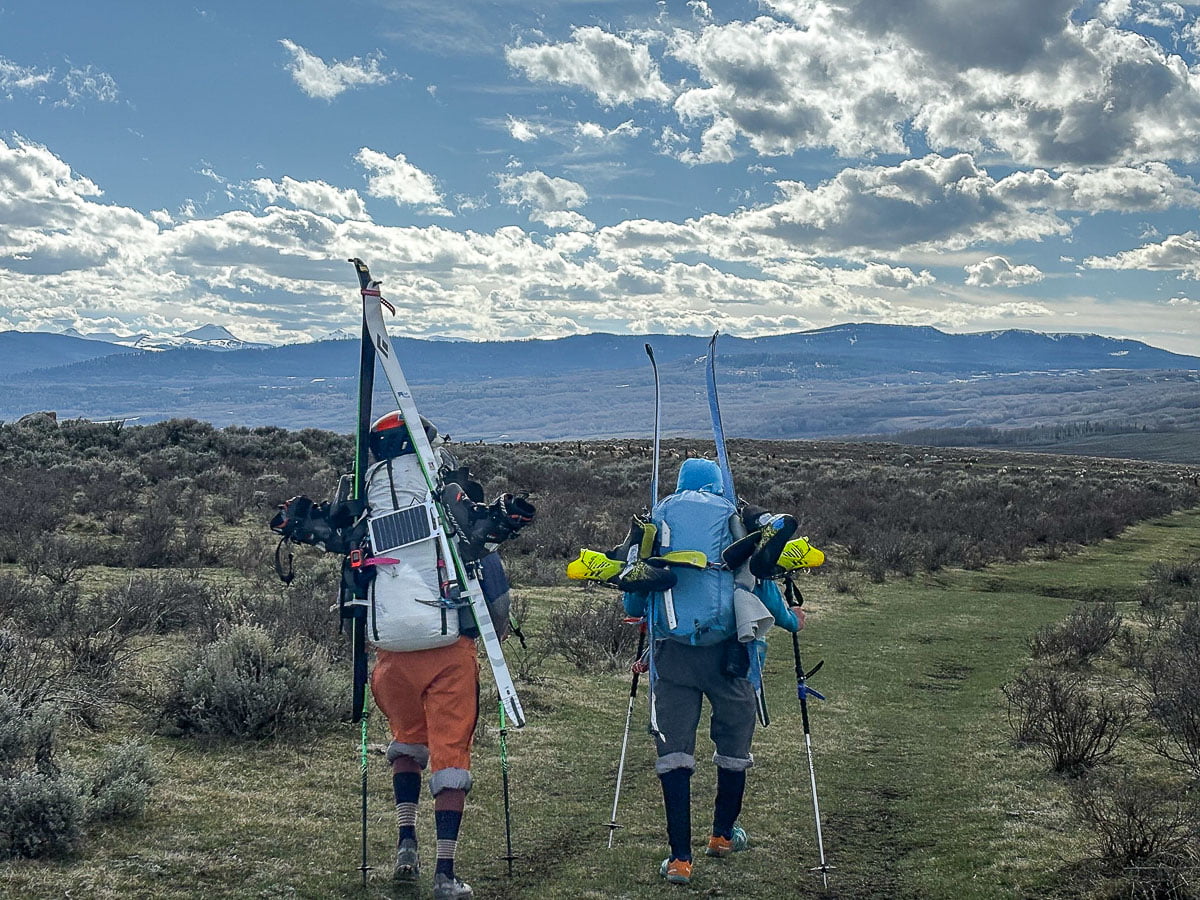
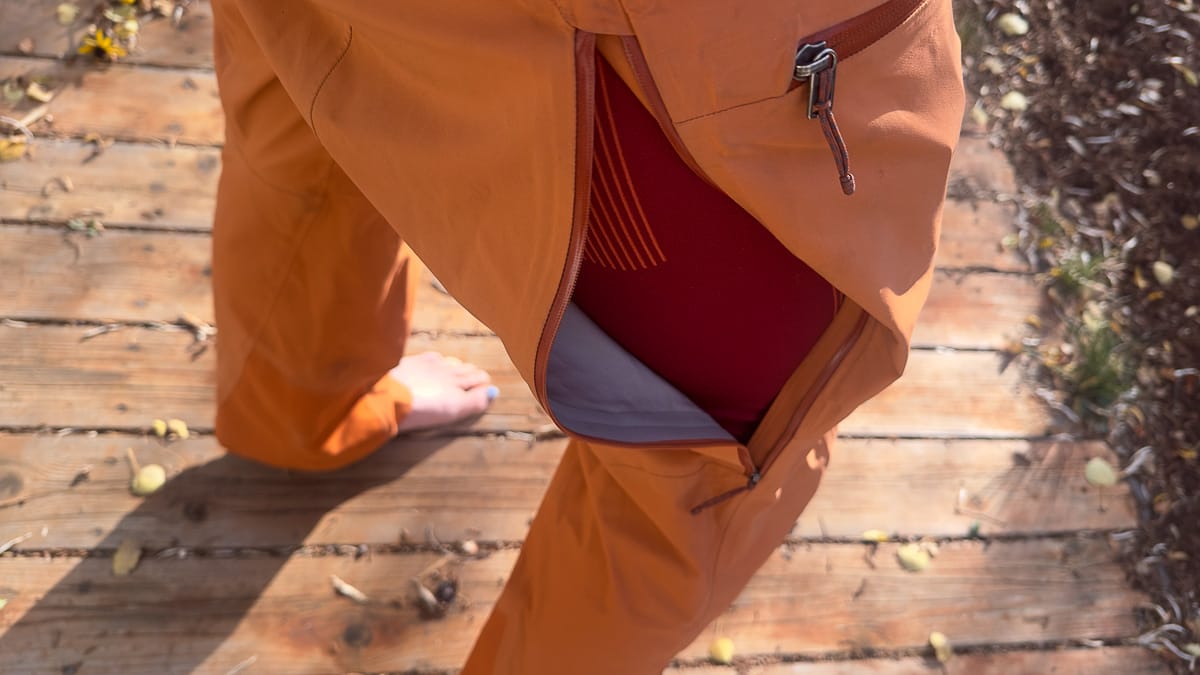
I vacillated on pant choice when choosing clothing for an extended ski traverse this spring. During two prior excursions into the Wind Rivers, I wore softshells on one trip and hardshells on the other. I chose to wear the Stromstrides for this trip due to my great experience with them up to that point.
I used hardshells (Stormstride), and both my partners opted for softshells. No FOMO here. Through the range’s high alpine, the pants ruled. Then, while connecting some dots during a two-day walk across the much warmer sagebrush steppes of the Upper Green River to more mountainous terrain, the pants still excelled: they were not too hot or clammy in high-output situations. However, during the peak-sun portion of the sagebrush stroll, I stripped down to the Lycra leggings. I’d say these pants are made for both comfortable skinning and, it turns out, some long-haul walking, too.
I experienced a nice sensation of air permeability with the Stormstrides. I often think of hardshell pants as 100% impermeable to the wind. This has not been lab tested, but I sensed the Stormstride’s fabric doesn’t completely shut down airflow. However, this is 0 CFM fabric, so maybe some air sneaks in through the zipper teeth here and there, who knows. For my use, which was all conditions ski touring in the lower-48 winter to late spring, this was in no way a downside.
I might have something else to say if I were using these pants in a colder region like the Alaska Range.
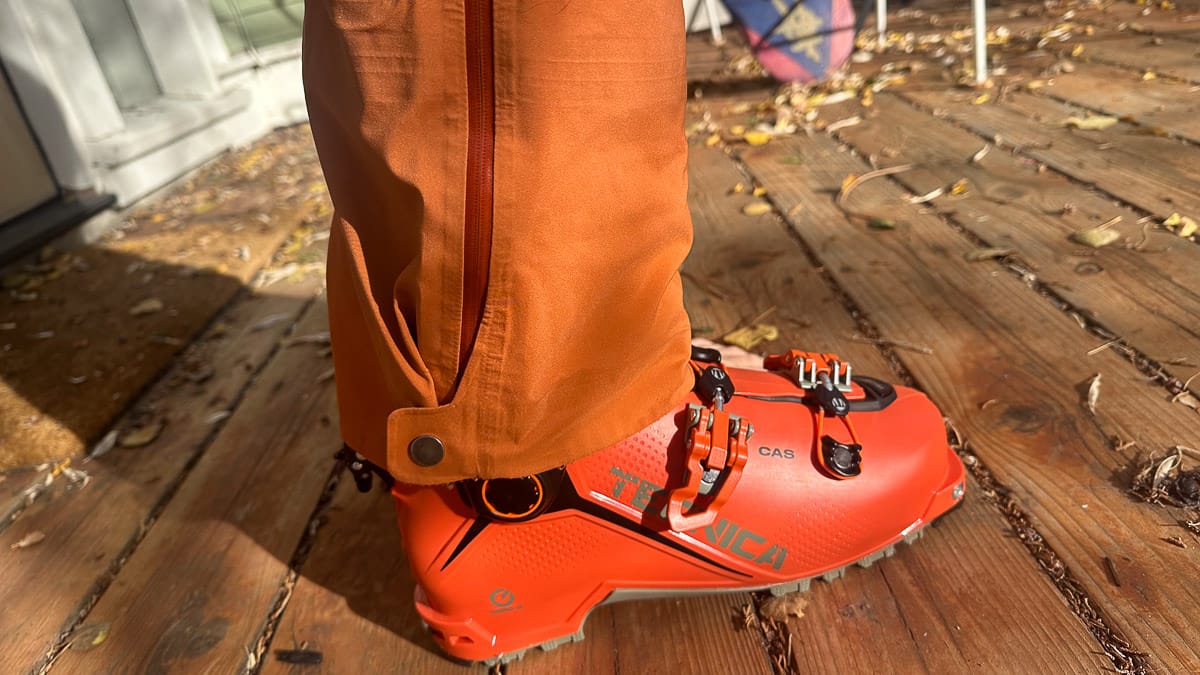


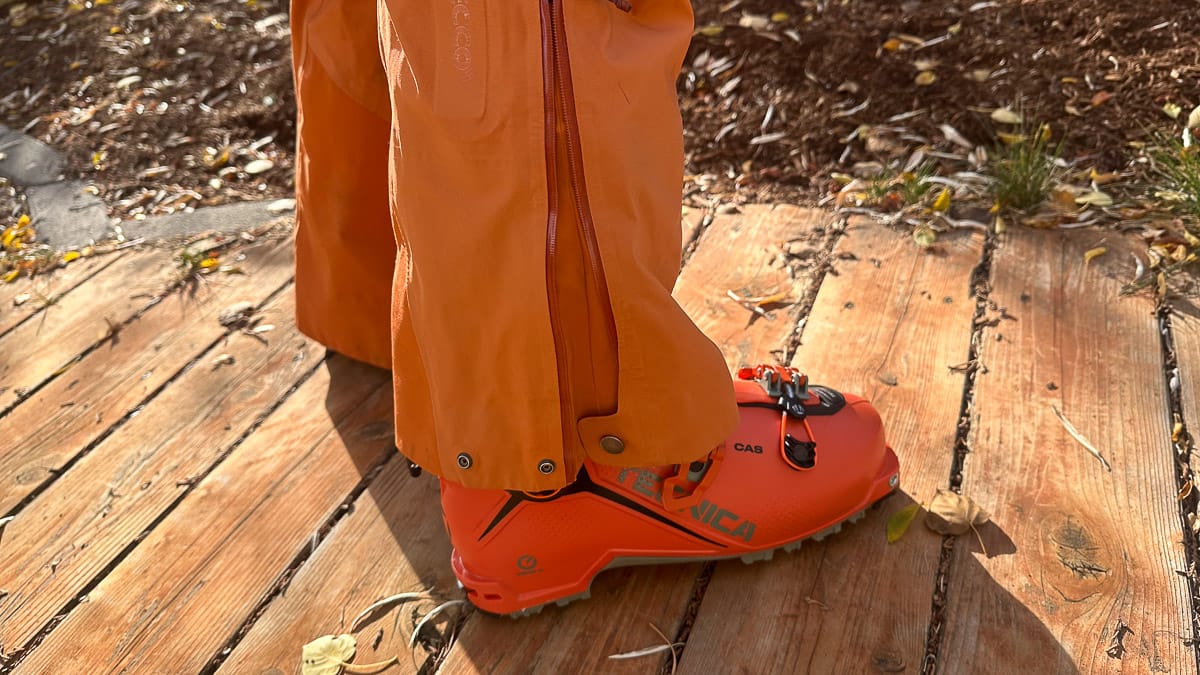
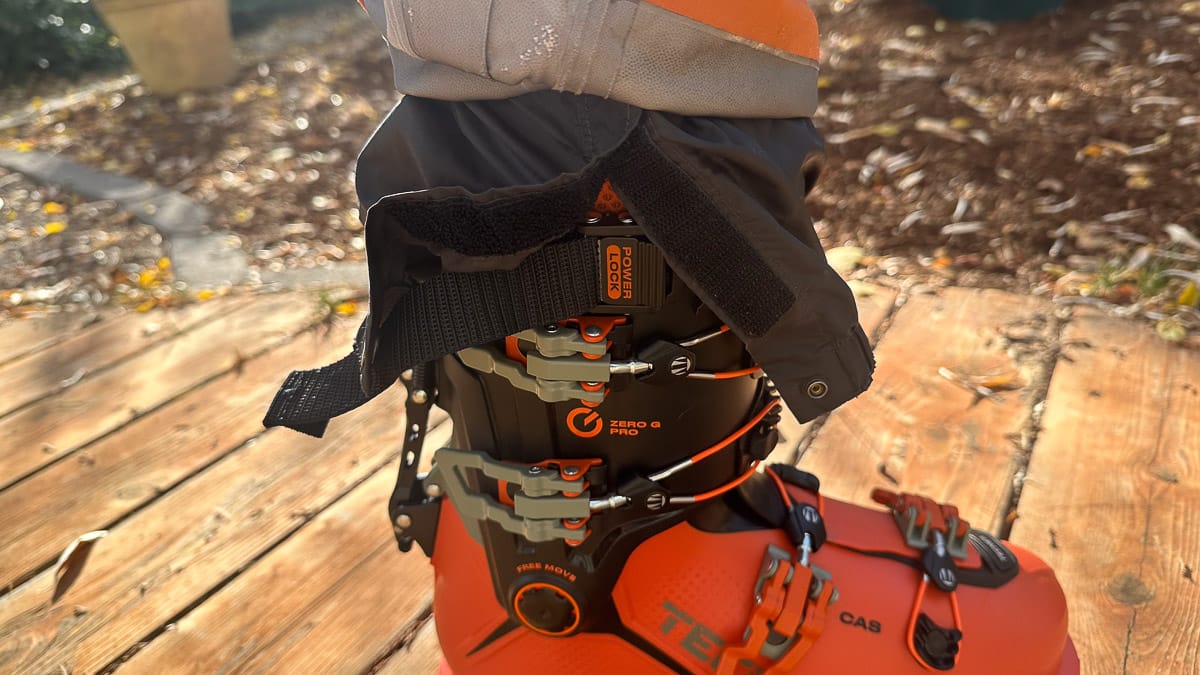
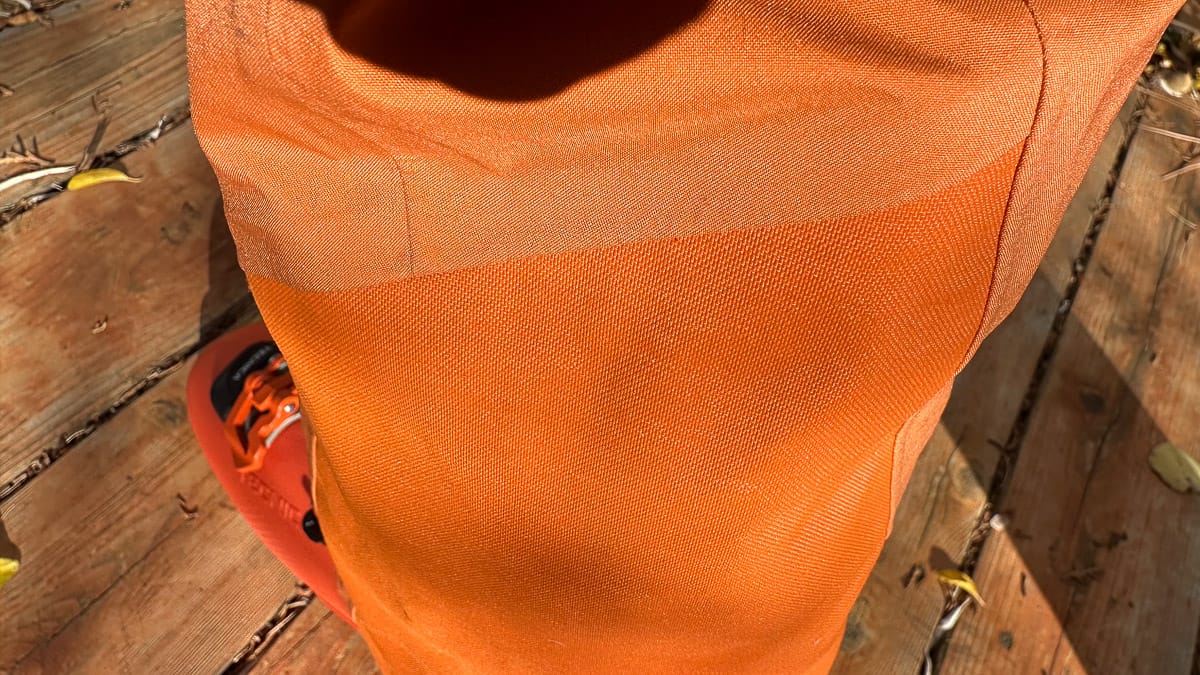
The Stormstride pant sit at one’s waist; they do not, like the Strafe low-bib pant, for example, allow for more protection from low to mid-torso. I suppose on multi-day sleep-outside (or in a mid/tent) type excursions where one expects deep unconsolidated snow; one might consider opting for greater protection.
Throughout the winter, the pant’s weatherproofing was never in question. Even here in the PNW (I live on the east side of the crest and tour most often on the crest), the DWR, 3L membrane fabric, and weatherproof zips have been….weatherproof. I have washed the pants several times when I notice dirt/grime building up on the face fabric or the fabric wets out.
Regarding the feature set, I don’t think I’d add anything beyond including a set of suspenders only because I like suspenders.
The two hand pockets are perfectly sized and, even stuffed with a transceiver (the right-hand pocket), small liner gloves, and a snack or two, don’t impede one’s movement. The gaiter is how I like it—minimal and easily adjusted. They have a snap closer and can be opened and closed via a ~6″ velcro closure. Further, the pant cuff is set to fit most ski/splitboard boot options as it can expand or size down with a zipper that allows the cuff to expand and three snap buttons to adjust the cuff opening. That is to say, if, like me, you swap out boots routinely depending on the mission, the cuff can be tapered over a skimo boot or slightly more baggy and expansive to accommodate a freeride boot. For those using larger boots like a Tecnica ZG Tour Pro, the gaiter and cuff fit nicely over the boot top without requiring the cuff zipper to be unzipped. It makes for an overall cleaner look and feel. The gaiter extends to only the leg’s hemline. For those seeking a 100% seal out the powder snow gaiter, I could see the gaiter, in some scenarios, riding up or not extending as far as some would like. However, this was not an issue for me.
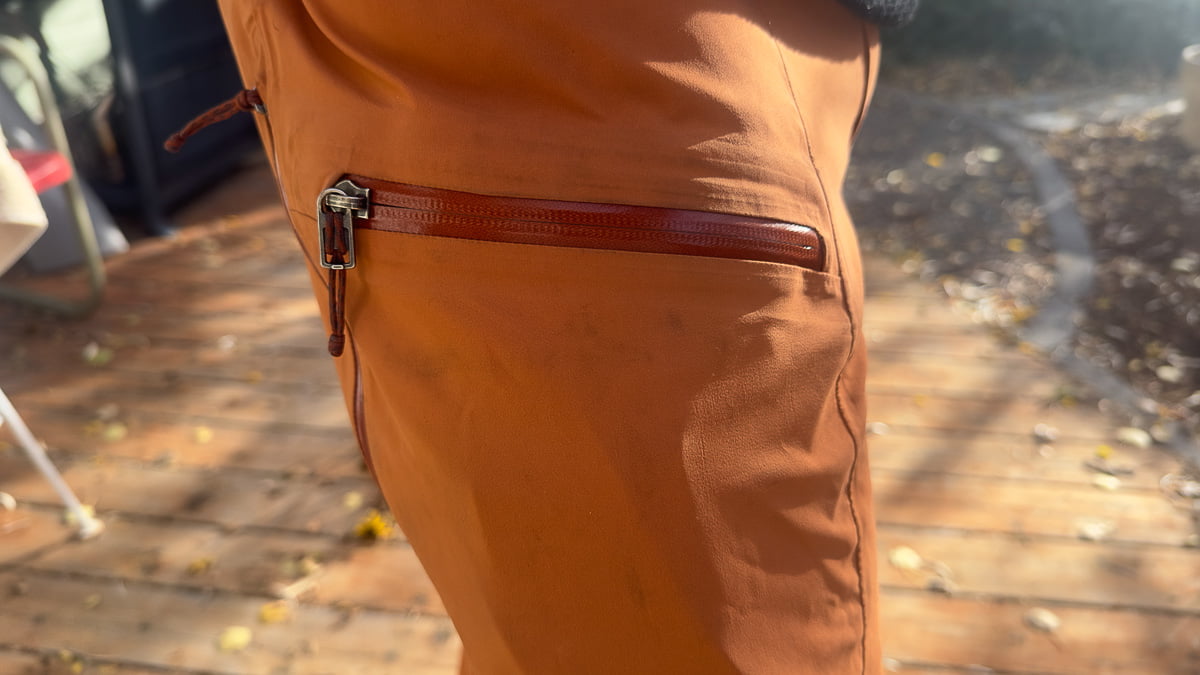
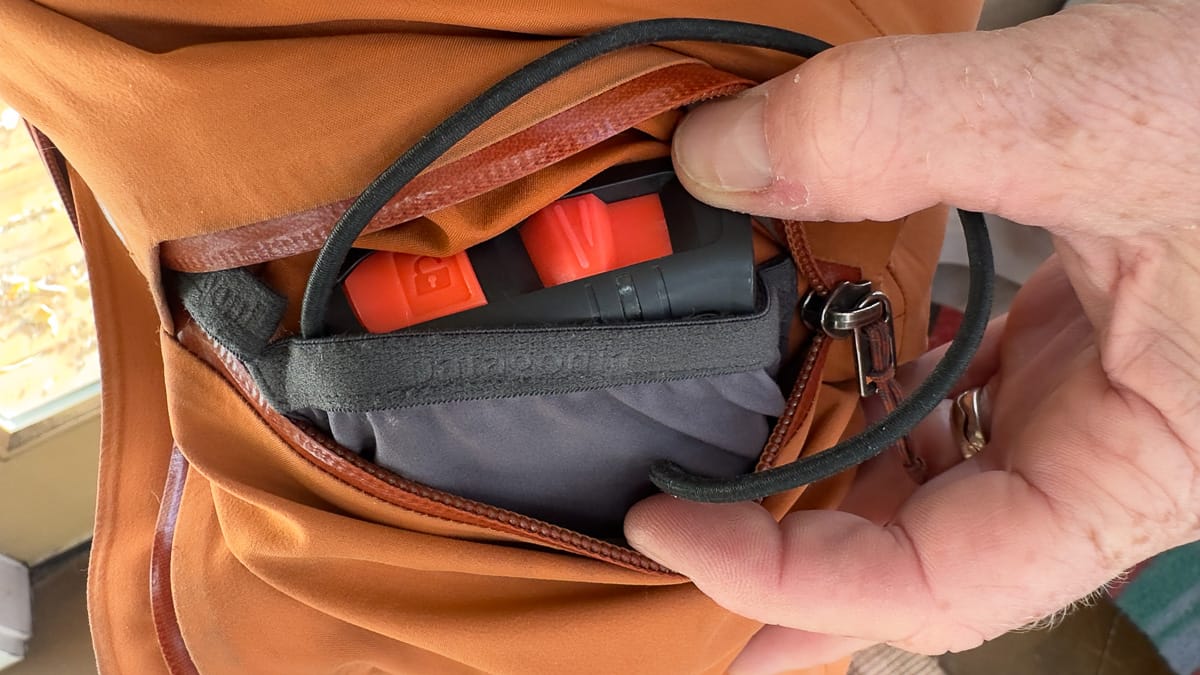
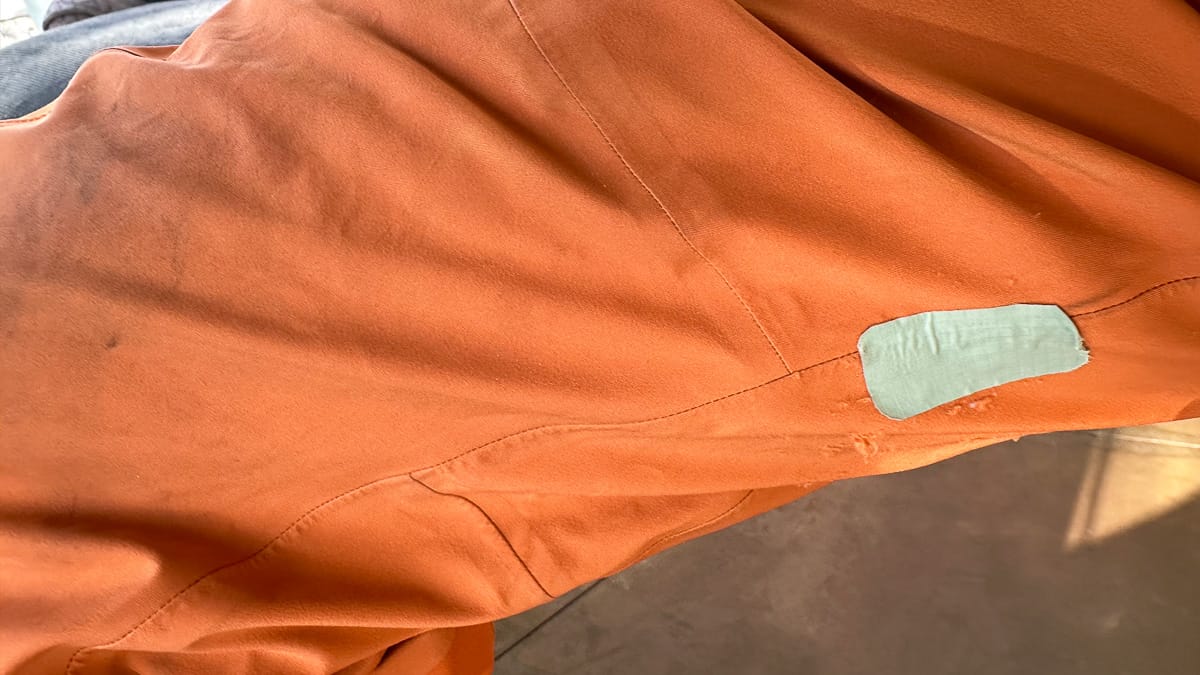
Exiting Words
Patagonia has done the community a favor. They have designed a ski/ride pant allowing most of us to keep our softshells and burlier hardshells in the closet. I expected the Stormstrides to be a pant option, one of several, for the winter and spring. Which they were. However, once I stepped into the pants, used them a few times, and understood their versatility, my fidelity to the Stormstride pants was high. These pants would get the Gavin/Slator “all-day-wearable” accolade.
Certainly, these are hardshell pants. Yet, considering their mobility, function, temp-regulating ease, and perceived high breathability, they feel as if they swerve well into the softshell lane, too. Those opposed to the crinkly noise and sensation of pants constructed from materials like Gore-Tex Pro have nothing to fear in the auditory/sensory department. This hardshell fabric feels and sounds more like a softshell rather than a traditional hardshell fabric. They are softish and supple for a hardshell.
So far, the durability has been excellent. I wore a pretty hefty knee brace over the pants while skinning and descending for most of my season. You can imagine the multiple high friction ware points between the face fabric and the brace. There was some minimal abrasion, which is a testament to their durability despite the pants not being overbuilt.
There’s got to be some downsides. Fit could be one. Just because they feel great on me doesn’t mean they will on you. I see the thighs (at least in the men’s medium) as being the potential no-go for some.
(Ok, I also have a pipe dream— anyone at the Patagonia Forge read THR? It’d be pretty sweet to have a Stormstride pant constructed from the same sweet@$$ fabric as the new M10 pant. Sure, durability would be compromised, but it would make for a refined and lightweight hardshell pant.)
There’s a sweet spot for backcountry clothing. I keep returning to the idea that the gear we use should be excellent most of the time. More than most of the time, I’ve found the Stormstride pant shines.

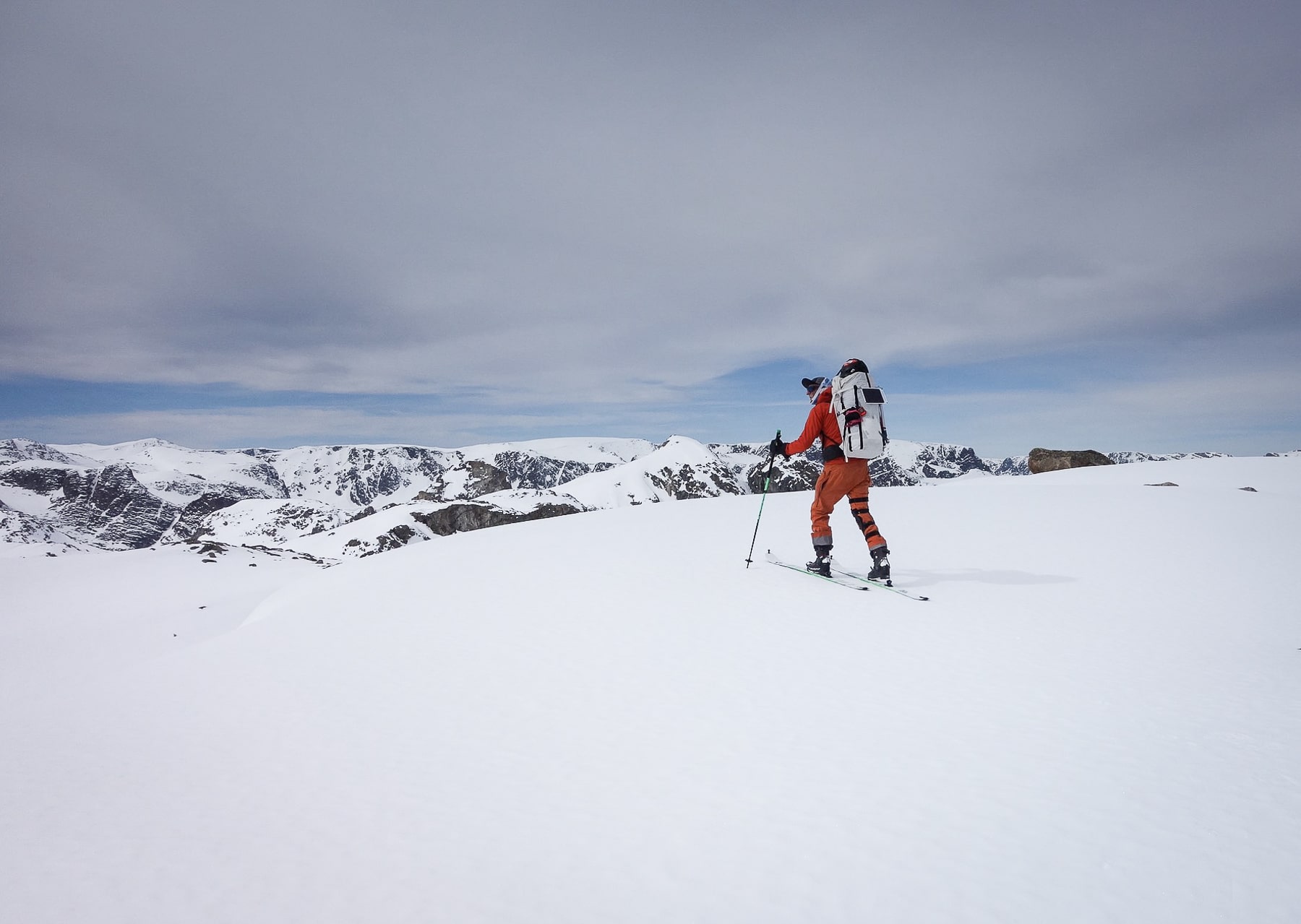




Leave a Reply
You must be logged in to post a comment.